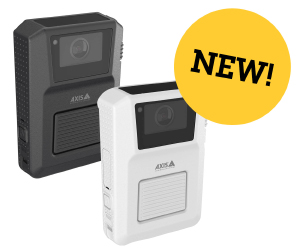industry focus
Where next for EAS?
Reflections on Current and Future Developments in Product Protection
by Colin Peacock, ECR Europe
Marketing textbooks tell us that every product, brand, and technology has a life cycle. First, there is the launch and introduction, then a period of strong growth, then a period of maturity, and then of course, a period of decline.
The textbooks point to two decline-management strategies that are within the control of those who presently own the product, brand, or technology.
First, the product, brand, or technology can be reinvented to appeal to a new target market by better responding to new trends and needs. Olay, Lucozade, and Burberry are three examples of mature brands and products that were reinvented with great success. In the case of Lucozade, sales of this fizzy tonic drink tripled through the introduction of smaller bottles and new advertising campaigns that repositioned the brand as an energy drink used by sports stars.
The second approach is for organisations to recognise that if they don’t embrace and manage the decline, their competitors will. So in these organisations, they have a deliberate plan to create and launch new superior products and technologies that push the existing product into decline. Apple and its iPhone product is a great example. To defend its market share and stay ahead of its competitors, the company continually updates its products with new superior versions: 4 was better than 3, 5 was better than 4, 6 was better than 5, and so forth. Another example would be Gillette, where the decline of two-blade razors was triggered by the launch of three blades. More recently, three-blade razors have been put into an accelerated decline by the launch of five blades. This approach to product life cycle management has helped Gillette remain the most popular razor brand in the world.
All this learning on product life cycles came to my mind as I started to write this article on Electronic Article Surveillance (EAS), a mature technology that prevents shop theft through the threat of detection (at the store exit) of items that have not been purchased.
If EAS is today acknowledged as a mature technology, then the next stage could be assumed to be decline. This then opens up the question—how should retailers and loss prevention leaders manage this decline? Should they look to avert and delay its decline by reinventing their current EAS programmes, making EAS work harder, or should they start searching for an alternative, better solution to shop theft that could replace EAS?
I don’t think this is a case of either-or. I believe retailers need to do both, and to get started, they must be informed by a very robust, independent, and transparent review of their current EAS programmes. To enable this change, loss prevention leaders may want to consider the appointment of a single person accountable for the review, the process of EAS reinvention, and the exploration and trials of new shop-theft technologies.
Action 1: Know How EAS Is Working Right Now in Your Organisation
EAS was invented in a retail context when there was no self-scanning, when ordering online was not even thought about as a possibility, and in a retail world moving away from small-box, urban convenience stores. But these are the realities within which EAS is now operating, with modern retailers having a plethora of formats, product ranges, staffing models, and technology capabilities that all have an impact on the way in which EAS technologies function.
To answer the question of how EAS is working in an organisation now, the reviewer should undertake the following:
1. Commission a full audit of the current programme,
2. Complete structured interviews with store managers and associates,
3. Review the current EAS scorecard,
4. Work with the Finance function on a true cost of ownership of the EAS programme, and
5. Perform a SWOT analysis.
Below are examples of the audit questions that should be considered.
Products:
■ Which products are currently being shipped to stores with tags inserted or applied either by the vendor or by the retailer at the distribution centre?
■ What guidance is being given to stores regarding which products they should protect in store with an EAS tag or an EAS-enabled device?
■ Are the right products being protected?
■ What is the product-tagging compliance rate and root cause of poor compliance?
Deactivation Equipment:
■ What equipment is there in store for tag and device deactivation, and is it in full working order?
■ What is the deactivation rate?
■ How are EAS-protected items being deactivated when being paid for by self-scanning devices, at self-scanning tills, at mobile tendering devices such as iPads, or via an online transaction shipped from the store or fulfillment centre?
EAS Pedestals:
■ How many gates are there per store and in which locations? Does the appearance of the gates indicate the equipment is in working order, and do they support the store and brand standards of your organisation?
■ What are the capabilities of the gates beyond reading EAS? For example, can they count customers, be used as advertising space, or identify known tag-avoidance techniques such as foil-lined bags?
■ What is the read rate of EAS gates, and how does this vary across types of stores?
Alarm Management:
■ Is the company policy on alarm management clearly understood by all members of staff?
■ Is there evidence of strong compliance to the policy?
■ What level of visibility is there to EAS gate alarm activity and store responses to them? Is there data on the percentage caused by failed deactivation, percentage caused by tag pollution, and so on?
■ Do the stores have interventions and training in place to reduce the number of non-theft alarms?
■ Are customer complaints of false EAS alarms logged by the company or the store?
■ Do the stores have records of the number of apprehensions made and the value of goods recovered?
Next, there should be structured interviews with store managers, associates, and security guards, either facilitated by a research agency, by the loss prevention leaders themselves, or by the retailers’ own market research teams.
The interviews should seek to understand how stores currently think about EAS, how it is working, whether they view it as effective and a worthwhile addition to store security, and how it might be improved.
The next part would be to review the scorecard and key performance indicators pertaining to the EAS system. What does the data tell the organisation? For example, what are the trends in alarm activations, response rates, the number of items tagged at source, the number of apprehensions, and the number of complaints?
Next, assisted by colleagues in finance, the reviewer should undertake a full assessment of the true cost of the EAS system, including all elements of the costs associated with EAS, from tag and device purchases, cost of dedicated store labour, system maintenance, energy costs, injury claims, shopper compensation, the cost of prosecuting thieves, and so on. If the organisation has implemented a clear segmentation strategy to the EAS investment to reflect the different risk profiles of stores, the analysis should aim to get a cost of ownership for each strategy.
Finally, there should be a SWOT analysis, informed by the previously mentioned analyses, identifying the strengths, weaknesses, opportunities and threats that should be used to shape an improved EAS strategy.
Action 2: Build a More Effective EAS Programme
Experienced, organised, and professional shop thieves have long ago identified how to defeat what they view as rather predictable EAS technologies. Their habits and techniques are well advertised on YouTube and available in published books sold on Amazon. Given this, the primary target for EAS technologies should arguably be to deter the opportunist thief as opposed to the committed criminal.
Understanding opportunistic thieves is important and relevant to loss prevention managers because potentially, in the right circumstances, they can make up the vast majority of those trying to steal from retail stores. In fact, I heard a recent respected industry expert speculate that perhaps 10 per cent of those who visit a retail store could be potential thieves.
In this respect, academic research is very helpful; it suggests that there is a crime continuum whereby those presented with the right opportunity are highly likely to engage in a wide range of criminal endeavour.
To test this theory, let me ask you a sensitive question: have you broken the law this month? If you drive a car and have broken the speed limit, you have indeed broken the law and behaved dishonestly.
But before you committed this crime, you almost certainly made a quick assessment, asking yourself four key questions:
1. What is the risk of being caught speeding? (You thought low, right?)
2. What is my level of motivation? (Were you late for that meeting again?)
3. What is the level of difficulty to do it? (Just press your right foot down a bit harder?)
4. What is the extent to which I fear the possible consequences? (You thought low, right?)
You therefore decided to break the law and speed along the road as well as along the crime continuum! In a similar fashion, before thieves steal, they will typically ask these same questions. And while the retailer can have little impact on motivation, the degree of difficulty (most retailers don’t like missing out on the impulse sales they get from making the items available for self-selection), and the impact of sanctions, they can do something about increasing the perception of the risk of being caught.
For most retailers, amplifying the perception that EAS will increase the risk of being caught is therefore the big improvement idea, but it requires the following points to be considered.
Increase Compliance. How often have you visited a store, looked at a shelf, and seen that only some of the at-risk (hot) products have been protected with an EAS device? How could stores improve compliance? More audits? More training? A clearer direction on what to tag? Increasing the percentage of products that are tagged before arriving at the store? Removing the opportunity for stores to apply any tags or devices at the store completely?
Increase Risk Communication. Retailers could request that all products that have a tag inside should have a statement on the outside such as “security protected.” In the same way, devices such as hard tags, spider wraps, keeper cases, and soft tags applied in-store could all have the words “security protected” displayed to help amplify the perception of risk. Equally, checkouts, self-scan devices, and the EAS pedestals themselves can all be leveraged to amplify risk. For example, a USA retailer is now placing public-view monitors over the store exits, and when an EAS alarm is activated, the screen shows the image of the shopper setting off the alarm with the message “security recording in progress” prominently displayed.
Improve Meaningful Alarm Response Rate. If you work in the loss prevention team, when was the last time you spent a day working alongside the store associate or third-party security guard responsible for the handling of alarm activations? This is often an excellent way to gain insights into how the system is actually working on a daily basis. Another way is to use your video system to gain valuable insights into root cause of those alarms, as well as an assessment of the response rate.
For benchmarking purposes, you may want to consider these data points from a study by Hayes and Blackwood, which is based on audits in 320 USA food, drug, and mass merchandising retailers:
■ Only 60 per cent of EAS pedestals were able to read products with a soft tag inside.
■ In 91 per cent of stores visited, there was no form of acknowledgement by any person in the store when an alarm was activated.
■ Of the 9 per cent of occasions when there was an acknowledgement, on just 5 per cent of those occasions did a member of staff respond to an alarm in what was considered a “meaningful” way, such as the checking of a till receipt or identifying the product that triggered the alarm.
What this data suggests is that the odds of a thief even getting asked about the reasons for alarm activation are generally very remote. If they were to steal one item every day for 1,000 days, the odds suggest that they would get asked to help identify the cause of the alarm on just under three visits or about once per year!
The most logical starting point would be to begin with a clear understanding of the reasons for the alarms in the first instance. As a benchmark, UK researchers found that 96 per cent of the alarm activations were non-theft. No wonder the alarm response is so low if the system is “crying wolf” to this extent.
To reduce the number and rate of non-theft alarms, the causes need to be better understood. Are the majority of these alarms triggered by shoppers entering or exiting the store? How many can be attributed to a legitimately purchased product not having the tag correctly deactivated? Equally, how many false activations are generated from self-scan transactions compared with staffed checkouts? How many are simply caused by non-tag objects, such as children’s prams, balloons, and wheelchairs? Once the root causes are exposed, the solutions will become more obvious. In a recent case study, a US home improvement retailer shared how a 50 per cent reduction in non-theft alarms was achieved by investing in better deactivation equipment, which in turn generated quantifiable improvements in store productivity.
Action 3: Experiment with New Shop-Theft Detection Technologies
In the shoplifters’ handbook written by Gaime and Ghone, the authors offered up the following advice to retailers: “Nothing will turn shoplifters away faster than the attentive, courteous service that every customer deserves.”
Implicit here is that prevention needs to happen almost before the item is selected and concealed. If your intervention has to wait until the exit, it is probably too late to prevent the theft. So the challenge is to develop new technology solutions that can help store associates be made aware of those shoppers, in near real-time, where the provision of an attentive and courteous service could lead to the prevention of theft.
Today, a promising solution that is already helping some retailers transform their existing shop-theft capabilities is radio frequency identification (RFID). This is not a new technology. In fact, many retailers will remember the bold promises made for this technology stretching back twenty years or more. But the adoption to date has been slow across most retail channels with the exception of apparel, where store-wide deployments have been undertaken in companies such as Zara, M&S, C&A, American Apparel, and Decathlon.
The key building blocks for their business cases have been staff and customer satisfaction, inventory accuracy, and productivity, not shop theft. In fact, I am only aware that one of these five retailers has an RFID use case based on shop theft, based upon the following perceived benefits:
1. The tag can be embedded in the item in a way that means it is difficult to remove, or if it is removed, it is likely to reduce the re-sale value. Further, if the thief attempts to return the stolen item, the retailer can refuse it if the RFID tag is removed or the tag indicates that the product had never been sold.
2. When a tag is read at the exit gate in a “not been paid for” mode, an alert and image of the product or products can be instantly sent to the store associate or security guard. This enables a far more attentive and courteous service, since the associate will know exactly what specific product or products caused the alarm.
3. Replenishment systems can be connected to the exit gates, so items leaving the store without being paid for are recognised as missing, enabling the inventory record to be kept up to date and providing valuable information on the extent of theft in the store, helping to reduce the amount of loss where the causes are unknown.
A big barrier to the more widespread adoption of the shop-theft use case for RFID will be the cost, but there are also some very practical operational considerations as well. To date, I am not aware of any retailer that has been able to apply RFID to 100 per cent of all the items they sell in the store. Simple physics and the limitations of the technology remain a large reason. For example, read rates from products with high metal or water content remain problematic. The big problem is that if you cannot get to 100 per cent of the items using RFID, then a store will need two work process streams to handle items with and without RFID tags. Key processes will be product receiving, cycle counts, tendering and payment, and of course, exit detection. The presence of these multiple work processes introduces complexity to the store, dampening any possible business case.
So while there is no doubt that apparel retailers will continue to expand RFID and that many in other channels will start looking at how hard EAS tags with RFID embedded can increase visibility to the extent of the shop theft problem, it is easy to see how many loss prevention leaders have now concluded that the prospect of RFID as an alternative to EAS, certainly in the short term, is not that promising.
More promising though and potentially more near-term are new shop-theft technologies that alone and connected together can help prevent shop theft by alerting staff to those customers where attentive and courteous customer service would help deter theft. Here are four potentially connected ideas inspired by technology.
Smarter Products: Beyond RFID, there are new emerging technologies such as conductive inks that can provide data on product identification and location without the need for human intervention.
Smarter Fixtures: New technologies are now enabling shelves, pegs, and rails to know what and how many items they hold. These go beyond RFID and can recognise product package-based sensors providing a range of data points including weight, quantity, and importantly, when and how many products are being removed, in near real time.
Smarter Cameras: Advances in camera technology, image resolution, exception management, networking, and remote monitoring, together with image and pattern recognition have transformed the capability of cameras and the alerts they can generate to enable engaged store associates to deliver better customer service that in turn can help prevent theft.
Smarter Mobile Devices: Such technologies were not in the minds of the inventors of EAS. But today in the hands of shoppers, they can be used to scan and pay for items. While in the hands of store associates, real-time alerts can be sent to them to help prevent shop theft through courteous customer service. The full possibilities of smart mobile devices in shop-theft prevention are still to be explored, and they could offer imaginative and innovative ways to improve product protection.
Individually, these technologies may be able to deliver new levels of shop-theft prevention by connecting observed events to engaged and motivated store associates who can then present themselves to shoppers in a way that alerts potential shop thieves to a heightened risk of being caught.
However, when these technologies become more connected, the opportunistic thief’s perception of the risk of being caught may be magnified significantly. Perhaps in a future retail store, the shopper will make a selection from a smart shelf that then sends a message to a CCTV system logging that an item has been selected. A member of staff could then be alerted in near real-time via their mobile device, showing them an image of the shopper and the product they have selected. They could then decide to approach the shopper and ask them if they need help and possibly offer them some form of discount or promotion opportunity. Together this delivers what the shop thieves themselves have told retailers is the best deterrence—attentive and courteous customer service.
Whether these technologies or RFID-based approaches become the eventual replacement of EAS is not clear right now. Both need significant further development and experimentation before this is likely to be the case. However, it could be that the emergence of these alternative technologies may mean that a replacement for EAS is perhaps not as far away as it might have been imagined.
The Role of the Shop-Theft Technology Tsar
Few other technologies are as relevant to as many stakeholders as EAS. It impacts the brand, shopper experience, the store manager and associates, the supply chain, product manufacturers, and law enforcement to name but a few. Given the breadth and range of stakeholders and the requirement for an ongoing investment in innovation, retailers may want to consider appointing a single individual to be accountable and on point for shop-theft technology.
Like a Tsar, they would, with great passion and zeal, champion everything connected to shop-theft technologies, including a scorecard that tracks and monitors current EAS performance.
The role would sit within the loss prevention team. For some retail organisations, it could be a fully dedicated role, especially through the initial current programme review stages. For others, it could be part time and just an extra level of responsibility. The skills needed would be the ability to think strategically, to being comfortable with collecting and analysing data, and most importantly, the ability to communicate well with others and build collaborative relationships.
Finally, one further benefit of having this dedicated role would be to consolidate and integrate the disparate systems to ensure the technologies work in unison to achieve the organisation’s goals. In many organisations, the people responsible for EAS, video systems, investigation systems, and intrusion systems often are different. Having one person lead these efforts may ensure the systems are working towards the same goals.
Just the Tonic the Industry Needs
This article set out to answer the question—what next for EAS?
While there is potential here for the industry to continue to work together on this question, now is the right time for each loss prevention leader to define the answer for their own organisation. I believe that avoiding the question and doing nothing is no longer an option.
Perhaps the most significant intervention any loss prevention leader can now make is to appoint a single individual in their team to be accountable for the reinvention of EAS and the exploration of the new technologies, where a 360-degree review of the current EAS technology can be the foundation and inspiration for new thinking.
Taken together, this appointment might just be the tonic retailers need to revitalise their shop-theft technology thinking and the key to getting an even stronger grip of the shop-theft problem, a major drain on today’s retail experience, sales, profit, shopper satisfaction, and loyalty.






